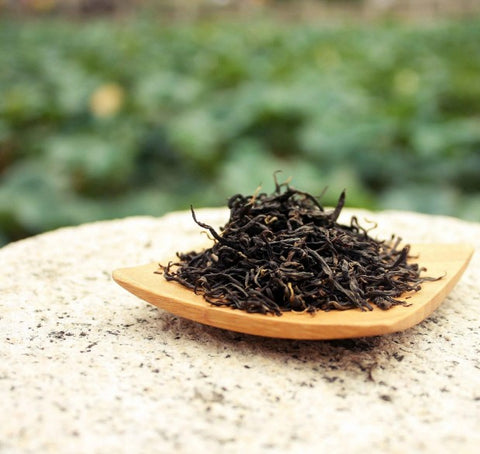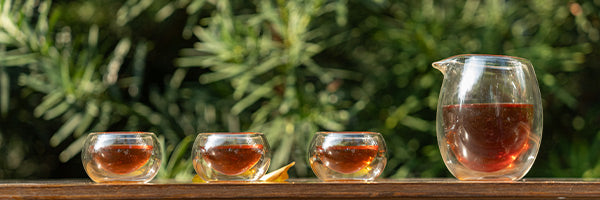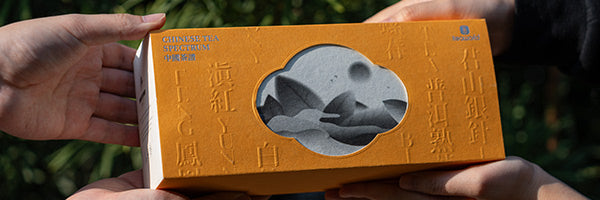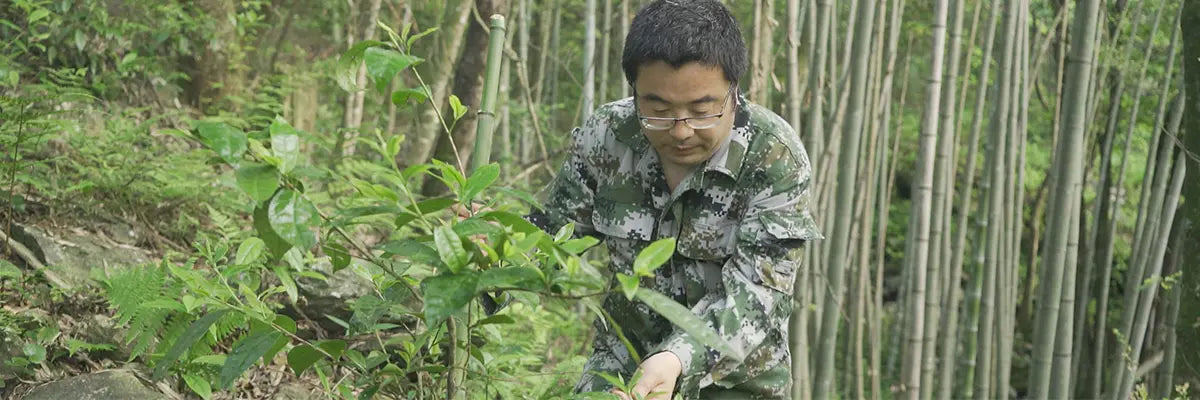Введение
Вы готовы отправиться в ароматное путешествие в мир листового чая? В 2023 году нет лучшего времени, чтобы исследовать чарующее царство чаепития и открыть для себя листовой чай, подходящий для новичков, который очарует ваши вкусовые рецепторы. В этом руководстве мы рассмотрим пять исключительных листовых чаев, которые идеально подойдут как новичкам, так и опытным любителям чая. Приготовьтесь насладиться сложными вкусами и ароматами Тегуаньинь, Миннаньского нарцисса, Дахунпао (Большого красного халата), черного чая Сушонг и черного чая Индэ . Каждый из этих чаев предлагает уникальное и восхитительное введение в мир листового чая, демонстрируя разнообразие и мастерство производства чая. Итак, подготовьте свой чайник, заварите чашку любимого чая, и давайте окунемся в пленительный мир этих листовых чаев, подходящих для новичков, в 2023 году .
Приготовьтесь вывести свои ощущения от чаепития на новый уровень и откройте для себя безграничные возможности, которые вас ждут!
I. ТеГуаньинь: Ода подлинности и традиции
А. Подлинность, коренящаяся в туманных горах Аньси
TieGuanyin, истоки которого глубоко уходят в туманные горы Аньси, Китай, является воплощением подлинности и традиций. Географическое положение Аньси, окруженного живописными горами, способствует уникальным качествам этого улуна. Туман, окутывающий регион, создает микроклимат, защищая чайные растения и позволяя им процветать.
Б. Климат: рецепт идеального чая
Местный климат в Аньси играет решающую роль в выращивании Тегуаньинь. В регионе среднегодовая температура благоприятствует росту чайных растений, позволяя им развиваться медленно и накапливать сложные ароматы. Безморозный период обеспечивает полное созревание чайных листьев, что приводит к богатому и тонкому вкусовому профилю. Кроме того, осадки в Аньси обеспечивают необходимое увлажнение чайных растений, гарантируя их цветение и производство высококачественных листьев.
C. Состав почвы: забота о сущности Тегуаньинь
Состав почвы в Аньси добавляет еще один слой уникальности ТеГуаньинь . Почва региона богата минералами, ее состав хорошо подходит для выращивания чая. Значение pH почвы способствует отличительным характеристикам чая, наполняя его тонким балансом вкусов и ароматов. Сочетание климата и состава почвы создает среду, в которой чай ТеГуаньинь может процветать, в результате чего получается вкусовой профиль, который пользуется большим спросом.

D. Признание в качестве всемирного культурного наследия
Историческое значение и культурная ценность ТеГуаньинь заслужили признание его как мирового культурного наследия. Аньси ТеГуаньинь имеет давнюю репутацию за его исключительное качество и мастерство. Его корни можно проследить до династии Мин, и он был почитаем ценителями чая на протяжении столетий. В знак признания его культурного значения ТеГуаньинь был удостоен сертификата Всемирного важного сельскохозяйственного культурного наследия, что укрепило его статус сокровища чайного наследия.
E. Принятие традиций и аутентичности
Смаковать чашечку ТеГуаньинь — значит принять традицию и подлинность. Уникальные характеристики чая, сформированные туманными горами, климатом и почвой Аньси, предлагают чувственный опыт, воплощающий суть китайской чайной культуры. Его тонкий цветочный аромат, освежающий вкус и длительное послевкусие пленяют чувства и переносят любителей чая в богатое чайное наследие Аньси.
TieGuanyin является свидетельством мастерства и искусности производства чая, а также глубоких культурных корней, связанных с ним. Изучение мира TieGuanyin — это приглашение оценить красоту традиций и замечательные вкусы, которые возникают из гармоничного взаимодействия природы и человеческого опыта.
II. Миннаньский нарцисс: взгляд на чайное наследие провинции Фуцзянь
A. Тесты безопасности органических продуктов питания в Японии: обеспечение качества и чистоты
Minnan Narcissus, родом из провинции Фуцзянь в Китае, прошел строгие японские испытания на безопасность органических продуктов питания, что гарантирует его качество и чистоту. Эти испытания обеспечивают дополнительную гарантию для любителей чая, гарантируя, что чай не содержит вредных веществ и производится с использованием устойчивых и органических методов. Сертификация, полученная в ходе этих испытаний, служит свидетельством стремления чая к совершенству.
B. Получено из 60-летних чайных деревьев: глубина вкуса и сложность
Minnan Narcissus отличается тем, что его получают с 60-летних чайных деревьев. Эти зрелые деревья имеют глубокие корни, которые поглощают питательные вещества из почвы, в результате чего листья богаты вкусовыми соединениями. Возраст деревьев придает чаю глубину вкуса и сложность, улучшая общее впечатление от дегустации. Чайные листья с этих старых деревьев метаболизируются с углеродистыми соединениями, что приводит к более высокому уровню сахара и полифенолов. В результате настои, полученные из этих листьев, получаются плотными, гладкими, сладкими и густыми.

C. Высокая способность к повторному замачиванию: раскрывающиеся слои вкуса
Minnan Narcissus обладает уникальным преимуществом: его можно заваривать многократно. Это означает, что чайные листья можно заваривать многократно, и каждый раз раскрывая новые слои вкуса и аромата. Листья 60-летних чайных деревьев способны выдерживать многократные заваривания, не теряя своей крепости, что делает этот чай прекрасным выбором для ценителей чая, которые ценят долговечность своих чаепитий.
D. Misty High Mountains: забота о качественном чае
С древних времен туманные высокие горы Фуцзянь были известны производством качественного чая. Minnan Narcissus выигрывает от выращивания в этих возвышенных регионах. Высокие горы обеспечивают уникальную среду с более пышной растительностью, что указывает на наличие плодородной почвы и более высокое содержание органических веществ. Сочетание горной местности и туманных условий способствует накоплению чайных веществ в листьях, усиливая их вкус и аромат.
E. Принятие чайного наследия провинции Фуцзянь
Minnan Narcissus предлагает заглянуть в богатое чайное наследие Фуцзянь. С его японской органической сертификацией и получением от 60-летних чайных деревьев, этот чай представляет собой преданность качеству и мастерству, которые передавались из поколения в поколение. Взаимодействие высоких гор, туманных условий и вековых чайных деревьев достигает кульминации в чае, который одновременно пленителен и тонок. Изучение Minnan Narcissus позволяет любителям чая погрузиться в наследие и вкусы, которые может предложить Фуцзянь.
В заключение, Minnan Narcissus демонстрирует наследие производства чая в Фуцзяне. От строгих тестов качества до уникального источника с 60-летних чайных деревьев, этот чай охватывает суть совершенства и мастерства. Его способность к повторному завариванию и влияние туманных высоких гор еще больше усиливают его привлекательность. Побаловать себя чашкой Minnan Narcissus — это приглашение ощутить богатые вкусы и принять чайные традиции Фуцзяни.
III. Дахунпао (Большой Красный Халат): Легенды и Наследие
A. Основной район производства Дахунпао: подлинность раскрыта
Дахунпао, также известный как Большой Красный Халат, имеет большое значение как представитель чая Уи "Янь", происходящего из основного района производства Дахунпао. Подлинность чая глубоко укоренена в его происхождении, поскольку он выращивается в определенном регионе, где процветают чайные деревья Дахунпао. Это гарантирует, что чай сохраняет истинную сущность и вкусы, связанные с этим известным сортом чая Уи.
B. Уникальный вкус Янь: отличительная черта
Чайные деревья Дахунпао растут в расщелинах скал, впитывая богатую минералами эссенцию своего окружения. Эта уникальная среда роста придает чаю заметный вкус «Янь». Термин «Янь» относится к отличительному вкусу камня, который характерен для чая «Янь» из Уи. Профиль вкуса Дахунпао формируется этой отличительной эссенцией Янь, добавляя сложности и глубины его вкусу.
C. Чай номер один среди ученых с историей более 700 лет: легенды и наследие
Дахунпао имеет богатую историю, которая насчитывает более 700 лет. Согласно легенде, во времена династии Мин один ученый заболел, проходя через гору Уи. Монахи поднесли ему чайные листья с местных чайных кустов, которые чудесным образом его излечили. В знак благодарности ученый обошел чайные кусты, сбросив свою красную мантию. Деревья, которые окружал ученый, стали известны как «Большая красная мантия». Этот чай с тех пор почитается как ученый чай номер один, что символизирует его историческое значение и связь с древними легендами.

D. Медленный процесс обжарки: раскрытие аромата и вкуса
Dahongpao проходит тщательный медленный процесс обжарки при слабом нагреве. Этот традиционный метод обработки чайных листьев дает нежный, сладкий аромат, характерный для этого сорта. Техника медленной обжарки также придает легкий дымный оттенок, добавляя слой сложности к общему вкусовому профилю. Результатом является гармоничное сочетание сладости и тонкой дымности, которая радует чувства.
E. История, искусство и мастерство
Dahongpao — это не просто напиток; это свидетельство истории, искусства и мастерства производства чая. Легенды, окружающие этот чай, в сочетании с его уникальными вкусами и ароматами, демонстрируют глубокую культурную значимость чая Wuyi "Yan". Преданность медленной обжарке и сохранение традиционных методов подчеркивают мастерство и страсть мастеров чайного дела, которые продолжают поддерживать наследие и репутацию Dahongpao.
В заключение, Дахунпао, или Большой Красный Халат, окутан легендами и является примером богатого чайного наследия чая Уи "Янь". Его аутентичность, уникальный вкус Янь и медленный процесс обжарки делают его отличительным и ценимым сортом. Изучение мира Дахунпао предлагает заглянуть в увлекательные легенды, мастерство и вкусы, которые на протяжении столетий пленяли любителей чая.
IV. Черный чай Сушонг: открытие скрытых сокровищ в заброшенных садах
A. Из гор Гуанси, Шанлинь на высоте 1200 м: высококачественное происхождение
Черный чай Сушонг происходит из гор Гуанси, а именно из Шанлиня, расположенного на высоте 1200 метров. Эти высокогорные регионы известны тем, что производят превосходный чай благодаря таким факторам, как благоприятный климат, плодородная почва и нетронутая природа. Уникальные географические условия способствуют развитию чайных листьев с исключительными вкусами и ароматами.
B. Заброшенные чайные плантации: источник скрытых сокровищ
Сырье для черного чая Сушонг поступает с заброшенных чайных плантаций в Гуанси, Китай. Эти сады когда-то были ухоженными, но оставались без присмотра в течение 30-40 лет. Термин «заброшенные чайные плантации» относится к участкам земли, которые когда-то активно возделывались, но с тех пор не были затронуты вмешательством человека. Это пренебрежение удивительным образом дает преимущества, которые делают чай, произведенный в этих садах, по-настоящему особенным.
C. Без обрезки: чайные листья, пригодные для повторного заваривания
Одним из преимуществ чая из заброшенных садов является отсутствие обрезки. Без регулярной обрезки чайные деревья растут естественным образом, что приводит к более длинным и крупным листьям. Эти листья обладают уникальным качеством, так как их можно заваривать повторно. Даже после нескольких заварок чайные листья сохраняют свою силу, что позволяет продолжать и получать удовольствие от чаепития.

D. Более аутентичный: более старые чайные деревья, более сладкие листья
Чайные деревья в заброшенных садах старше и зрелее, что способствует подлинности и сладости листьев. Возраст деревьев позволяет им поглощать больше питательных веществ из почвы, что приводит к листьям с более богатым вкусовым профилем. Сладость, полученная от старых чайных деревьев, добавляет чаю восхитительное измерение, улучшая общее вкусовое впечатление.
E. Органически выращено в естественной среде: безопаснее и полезнее
Чай из заброшенных чайных плантаций выращивается органическим способом в естественной среде. Эти сады не подвергались воздействию химических удобрений и пестицидов в течение нескольких десятилетий. В результате произведенный чай не содержит остатков этих веществ, предлагая более безопасный и здоровый вариант для любителей чая. Органическое выращивание повышает чистоту и качество Сушонга Черный чай, позволяющий раскрыться натуральным вкусам и ароматам.
F. Восхитительный аромат и стойкий вкус: наслаждайтесь с любимыми
Черный чай Сушонг обладает восхитительным ароматом, напоминающим черный чай, который обычно любят в западных странах. Ароматные ноты и привлекательный аромат делают его чаем, который понравится широкому кругу любителей. Более того, вкус черного чая Сушонг сохраняется даже после нескольких завариваний, позволяя любителям чая наслаждаться его вкусом в течение длительного сеанса. Это чай, которым можно делиться и наслаждаться с близкими, создавая памятные моменты и укрепляя связи.
В заключение, черный чай Сушонг, полученный из заброшенных чайных плантаций в Гуанси, Китай, представляет собой уникальный и захватывающий чайный опыт. От преимуществ листьев, которые можно замачивать повторно, до подлинности и сладости, полученных от старых чайных деревьев, этот чай предлагает заглянуть в скрытые драгоценности, найденные в заброшенных садах. Органическое выращивание и восхитительные ароматы делают черный чай Сушонг чаем, которым можно наслаждаться и которым можно делиться, способствуя чувству единения и признательности за его вкусы.
V. Черный чай Yingde: симфония ароматов и вкусов из Гуандуна
A. Основная производственная зона — город Индэ, провинция Гуандун: подлинность гарантирована
Yingde Black Tea родом из города Yingde в провинции Гуандун, Китай, который является основным районом производства этого изысканного чая. Подлинность и качество чая гарантированы его происхождением из Yingde, региона, известного своим давним чайным наследием и опытом. Чай, произведенный в этом районе, придерживается традиционных методов выращивания и обработки, что гарантирует сохранение истинной сущности и характеристик Yingde Black Tea.
B. Церемониальное чаепитие для иностранных гостей: знак престижа
Yingde Black Tea занимает почетное положение, поскольку он был выбран в качестве церемониального чая, подаваемого иностранным гостям. 7 апреля 2023 года президент Франции Эммануэль Макрон посетил чайную церемонию в отеле Guangzhou Songyuan, где Yingde Black Tea , наряду с Fenghuang Dancong, другим известным чаем из этого региона, был выбран в качестве церемониального чая. Это признание международных сановников подчеркивает исключительное качество и репутацию Yingde Black Tea.
C. Ароматный черный чай мирового класса: признан Международным советом по чаю
В 2019 году чай Yingde Black Tea получил признание Международного совета по чаю как лучший в мире черный чай с высоким содержанием аромата. Это престижное признание подтверждает его статус чая мирового класса, известного своим исключительным ароматом и вкусом. Уникальные характеристики чая Yingde Black Tea можно объяснить тщательным отбором свежих листьев, полученных с крупнолистовых чайных деревьев Юньнань и чайных деревьев нарцисса Фэнхуан, известных своим высоким содержанием аромата.
D. Влияние высокогорья на качество чая: пышность, органические вещества и разница температур
Yingde Black Tea выращивается в высоких горах Гуандуна, где ландшафт предлагает преимущества, которые способствуют его богатому вкусу и сильному аромату. Высокие горы могут похвастаться пышной растительностью, что обеспечивает плодородную среду для выращивания чая. В этих регионах почвы с более высоким содержанием органических веществ обогащают чайные листья питательными веществами и усиливают их вкус. Кроме того, значительные перепады температур между днем и ночью в высокогорных районах способствуют накоплению чайных веществ в листьях, что еще больше усиливает ароматы и вкусы чая.
В заключение, Yingde Black Tea из города Yingde, провинция Гуандун, — это чай, воплощающий симфонию ароматов и вкусов, которые отличают его как первоклассный черный чай с высоким содержанием аромата. Его аутентичность, признание в качестве церемониального чая и влияние высоких гор на его качество — все это способствует его исключительной репутации. Оценивая восхитительные ароматы и вкусы Yingde Black Tea, любители чая могут ощутить мастерство и мастерство, связанные с этим замечательным сортом чая.

VI. Искусство пивоварения: изучение техник и ритуалов
Никакое исследование листового чая не будет полным без погружения в искусство заваривания и различные методы и ритуалы, связанные с ним. Заваривание чая — это не просто процесс; это опыт, который затрагивает все ваши чувства. Чтобы по-настоящему оценить вкусы и ароматы обсуждаемых нами чаев, важно понимать методы заваривания, которые выявляют их лучшие качества.
1. Температура воды и время заваривания:
Температура воды и время заваривания играют решающую роль в извлечении желаемых ароматов из чайных листьев. Улунские чаи, такие как Тегуаньинь и Дахунпао, лучше всего заваривать при температуре воды от 180°F до 200°F (от 82°C до 93°C) и настаивать в течение 2-3 минут. Черные чаи, включая Сушонг и черный чай Инде, выигрывают от более горячей температуры воды около 200°F до 212°F (от 93°C до 100°C) и более длительного времени заваривания в течение 3-5 минут.
2. Выбор чайной посуды:
Выбор правильной посуды для чая улучшает общее впечатление от чаепития. Для улуна гайвань или чайник из исинской глины помогут уловить тонкие ароматы и вкусы. Пористая структура чайников из исинской глины позволяет накапливать чайные масла с течением времени, что еще больше усиливает вкус. Для черного чая фарфоровый или стеклянный чайник позволяет оценить цвет и прозрачность настоя.
3. Гунфу Ча: Искусство чая
Гунфу Ча, традиционная китайская чайная церемония, представляет собой сложный ритуал, который фокусируется на точном приготовлении и подаче чая. Он включает в себя несколько коротких заварок, что позволяет вам наслаждаться развивающимися вкусами чая с каждым настоем. Гунфу Ча можно практиковать с такими чаями улун, как Тегуаньинь и Дахунпао, выявляя их сложность и ароматы контролируемым и намеренным образом.
4. Пивоварение в западном стиле:
Для более расслабленного и непринужденного чаепития популярен метод заваривания в западном стиле. Просто используйте чайник или заварник, добавьте необходимое количество чайных листьев, залейте их горячей водой и дайте настояться в течение рекомендуемого времени. Этот метод хорошо подходит для черных чаев, таких как Сушонг и Yingde Black Tea, обеспечивая насыщенную и крепкую чашку чая.
Помните, что эти методы заваривания и ритуалы призваны улучшить ваш опыт чаепития, но не бойтесь экспериментировать и находить то, что подходит вам лучше всего. Путь к пониманию чая — это личное дело каждого, и все дело в открытии своих предпочтений и наслаждении процессом.
С добавлением этой главы об искусстве заваривания мы теперь изучили увлекательный мир пяти листовых чаев, подходящих для начинающих, в 2023 году. От подлинности ТеГуаньинь до насыщенных вкусов черного чая Yingde, каждый чай предлагает уникальный сенсорный опыт. Понимая методы и ритуалы заваривания, вы можете еще больше усилить свое наслаждение этими чаями и отправиться в путешествие по исследованию чая. Итак, соберите свою чайную утварь, выберите свой любимый чай и погрузитесь в искусство заваривания. Пусть каждая чашка станет восхитительным напоминанием об огромном и прекрасном мире чая. Ура!
VII. Польза для здоровья: питание разума и тела
Помимо своих восхитительных вкусов и ароматов, листовые чаи также предлагают ряд преимуществ для здоровья, которые могут способствовать вашему общему благополучию. Давайте рассмотрим некоторые из потенциальных преимуществ, которые эти чаи привносят в таблицу:
1. Антиоксидантная сила:
Многие листовые чаи, включая улун и черный чай, богаты антиоксидантами. Эти соединения помогают бороться со свободными радикалами в организме, защищая клетки от повреждений и снижая риск хронических заболеваний. Антиоксиданты также поддерживают здоровую иммунную систему и могут способствовать сиянию кожи.
2. Помощь пищеварению:
Улунские чаи, такие как Тегуаньинь и Миннань Нарцисс, известны своими пищеварительными свойствами. Они могут помочь успокоить пищеварительную систему, облегчить вздутие живота и способствовать здоровому пищеварению. Выпивая чашку улуна после еды, можно улучшить пищеварение и почувствовать расслабление.
3. Ясность ума и расслабление:
Чай, как правило, содержит L-теанин, аминокислоту, известную своим успокаивающим действием на разум. Сочетание L-теанина и умеренного содержания кофеина в таких чаях, как улун и черный чай, может способствовать ясности ума, сосредоточенности и чувству расслабления. Наслаждение чашкой чая может быть осознанной практикой, которая поможет вам расслабиться и найти моменты спокойствия в течение дня.
4. Гидратация и оздоровление:
Поддержание водного баланса необходимо для общего благополучия, и включение листового чая в ежедневный рацион может способствовать достижению ваших целей по гидратации. В отличие от сладких напитков или сильно обработанных чаев, листовой чай является освежающим и увлажняющим выбором, который может поддержать ваше благополучие.
5. Здоровье сердца:
Некоторые исследования показывают, что регулярное употребление улуна и черного чая может иметь положительное влияние на здоровье сердца. Считается, что эти чаи помогают снизить уровень холестерина, уменьшить риск сердечно-сосудистых заболеваний и способствуют здоровью сердца.

Важно отметить, что хотя листовые чаи и обладают потенциальной пользой для здоровья, индивидуальные результаты могут различаться. Всегда рекомендуется проконсультироваться с врачом, прежде чем вносить какие-либо существенные изменения в свой рацион или включать чай в определенные оздоровительные цели.
Отправляясь в путешествие по миру листового чая, вы с волнением открываете для себя не только заманчивые вкусы и ароматы, но и потенциальную пользу для здоровья, которую они предлагают. От антиоксидантов, защищающих ваши клетки, до пищеварительных средств, содержащихся в чаях улун, каждая чашка чая может стать восхитительным и питательным опытом для вашего ума и тела. Не забывайте наслаждаться чаем в меру и смаковать каждый глоток, зная, что вы балуете себя напитком, который не только радует ваши чувства, но и поддерживает ваше благополучие. Ура более здоровому и ароматному путешествию чаепития!
VIII. Устойчивость и этические аспекты: забота о планете и людях
Погружаясь в мир листового чая, важно учитывать аспекты устойчивости и этики производства чая. Поддерживая устойчивые практики и этичное снабжение, мы можем внести вклад в более здоровую планету и обеспечить благополучие работников чайной отрасли и местных сообществ. Давайте рассмотрим некоторые ключевые соображения:
1. Органическое и устойчивое земледелие:
Выбор чая, выращенного органическим способом без использования вредных пестицидов и химикатов, не только приносит пользу нашему здоровью, но и поддерживает устойчивые методы ведения сельского хозяйства. Методы органического земледелия ставят во главу угла здоровье почвы, биоразнообразие и сохранение воды, способствуя более устойчивой экосистеме. Ищите сертифицированные органические чаи, чтобы гарантировать их соответствие строгим стандартам.
2. Справедливая торговля и прямая торговля:
Сертификации Fair Trade и Direct Trade гарантируют, что фермеры, выращивающие чай, получают справедливую заработную плату, имеют безопасные условия труда и относятся к ним этично. Эти сертификации также способствуют развитию сообщества и охране окружающей среды. При покупке листового чая ищите этикетки Fair Trade или Direct Trade, чтобы поддержать благополучие работников чайной отрасли и их сообществ.
3. Воздействие на окружающую среду:
Учитывайте воздействие производства чая на окружающую среду и выбирайте чай от компаний, которые отдают приоритет устойчивым практикам. Это включает такие практики, как сохранение воды, сокращение отходов и энергоэффективные методы производства. Кроме того, некоторые чайные компании активно поддерживают усилия по восстановлению лесов и проекты по охране природы, способствуя сохранению естественной среды обитания.
4. Упаковка и сокращение отходов:
Обратите внимание на упаковку вашего лучшего листового чая . Выбирайте бренды, которые используют экологически чистые упаковочные материалы, такие как перерабатываемые или биоразлагаемые варианты. Некоторые компании также предлагают многоразовые или насыпные варианты, чтобы минимизировать отходы упаковки. Рассмотрите возможность повторного использования или перепрофилирования чайных банок или контейнеров, чтобы уменьшить свой экологический след.
5. Поддержка и расширение прав и возможностей сообщества:
Ищите чайные компании, которые активно участвуют в инициативах поддержки сообщества и расширяют возможности местных сообществ в регионах выращивания чая. Это может включать в себя предоставление образования, здравоохранения и развитие инфраструктуры. Поддерживая компании, которые ставят благополучие сообщества на первое место, вы вносите вклад в устойчивое развитие регионов выращивания чая.
Заключение
Наше путешествие по этим пяти листовым чаям, подходящим для новичков, было просто очаровательным. От подлинности и традиций Тегуаньинь до легенд и наследия Дахунпао — у каждого чая есть своя история. Minnan Narcissus, Souchong Black Tea и Yingde Black Tea демонстрируют разнообразные вкусы и ароматы, которые может предложить мир чая. Как новичок, изучение этих чаев позволяет вам отправиться в ароматное приключение, открывая нюансы и сложности листового чая.
Если вы готовы отправиться в собственное путешествие по изучению чая, мы приглашаем вас открыть для себя мир iTeaworld. Как бренд, посвященный предоставлению исключительных чайных впечатлений, iTeaworld предлагает тщательно отобранный выбор листового чая премиум-класса . Созданные с энтузиазмом и опытом, наши чаи поставляются из известных регионов выращивания чая, что гарантирует высочайшее качество и подлинность.
В iTeaworld мы верим, что чай — это больше, чем просто напиток, это чувственный опыт, который может перенести вас в разные культуры и моменты времени. Каждый глоток рассказывает историю, и мы стремимся воплотить эти истории в жизнь с помощью наших чаев. Ищете ли вы тонкие ноты Тегуаньинь, насыщенные вкусы Дахунпао или завораживающие ароматы черного чая Yingde, В нашей коллекции найдется что-то, что порадует каждого любителя чая: миннанский нарцисс и черный чай Сушонг .
Помните, чай — это не просто напиток; это ворота в мир вкусов, ароматов и моментов спокойствия. Приобщитесь к искусству чая с iTeaworld и отправьтесь в путешествие, которое улучшит ваше самочувствие и принесет радость в вашу повседневную жизнь. Приятного чаепития!












































































